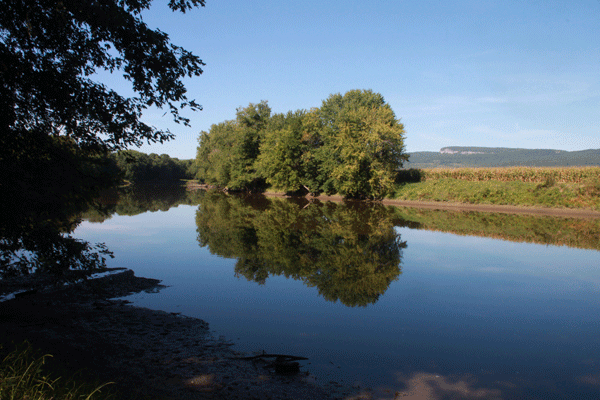
After over a decade of political conversation, repairs and rehabilitation for the Catskill Aqueduct which will begin in fall 2017 is nearing a final solution. This process of reparation will cause a shutdown of the aqueduct, therefore towns and villages that receive water from this aqueduct will have to find an alternative water source.
An approved Inter-Municipal Agreement (IGA) has been reached between the town and the village to use Plains Road and the Thruway Entrance property, owned by Samuel Plessler, as a water district that will serve as a site to pump water during the shutdowns. Costs for this project will be covered by the New York Department of Environmental Protection (DEP).
“We are working toward it,” said New Paltz Village Trustee Thomas Rocco. “The way a water district gets created is confounded and complex. It is no longer the immediate product of any village action, it is a town water district.”
According to Rocco, if it were to exist, Plains Road would become Water District No. 5. The infrastructure of this water district would contain a main pipe which would then connect to lateral pipes throughout Plains Road, then connecting to the village’s main pipeline. Therefore, Plains Road has great capacity to be a source that would feed water into the village’s system and become the water source for New Paltz for the duration of the shutdowns.
Additionally, this water district would be a subsequent remaining water source for the town and village.
Some residents of Plains Road have been opposed against this option since its inception. “The Water Watcher Group,” a self-named group of Plains Road residents who are against the possible water district, have signs on their lawns which read “Don’t Water District Me!” There are currently 23 out of the 86 houses on Plains Road with these signs up. According to Rocco, other residents are actually in favor of a water district’s creation.
Newly elected village trustee Don Kerr said that he had fought this proposal tooth and nail. Kerr had originally been in favor for the usage of the Wallkill River as a water source for the impending shutdown, however, Kerr said that unfortunately this is no longer being considered.
“The DEP is paying for the project [Plains Road], and understandably, the DEP does what is best for the DEP,” Kerr said. “There was little push back from the town or village boards. The New York City DEP did not want to pay for the Wallkill River option, therefore New Paltz didn’t even meet with regulators to investigate permitting.”
Kerr brought up concern that the current project could deplete water from the aquifer putting into question its viability as a long term source. According to Kerr, if the aquifer is aggressively depleted, many of the wells in the area and beyond could be affected.
Kerr said the Village of New Paltz purchases raw untreated water from New York City’s stock in upstate reservoirs. The cost of that raw water is $440,000 per year in the village budget, according to Kerr. If the village were to treat Wallkill River water, it could potentially save that $440,000 per year in water purchase.
“The price we pay for water from New York City has gone up nine percent this year alone,” Kerr said. “There is no such thing as free.”
There are two intergovernmental agreements: IGA between the village and New York City and the IGA between the town and New York City. The town and New York City IGA has been registered as of the first week of September 2015. A formal contract between New York City and town exists. However, a contract is in the works for the New York City and the village IGA to become formal.
“I am in my third year of this project,” Rocco said. “The only prospective I’ve had since the beginning is how to serve the people of the village of New Paltz. When Plains Road was identified as an excellent source of fresh water and can provide up to 400 gallons a minute, for a 10 week period, the interest of the town people had to be taken into account, then our prospective had to broaden.”
This aqueduct shutdown was originally planned to be one singular 10-week shutdown, however, developments in the plan for repairs have increased the shutdown to becoming three consecutive shutdowns. Currently, the DEP projects calculates that there will be one five-week shutdown in fall 2017, then followed by two 10-week shutdowns which will occur during spring 2018 and so on.
